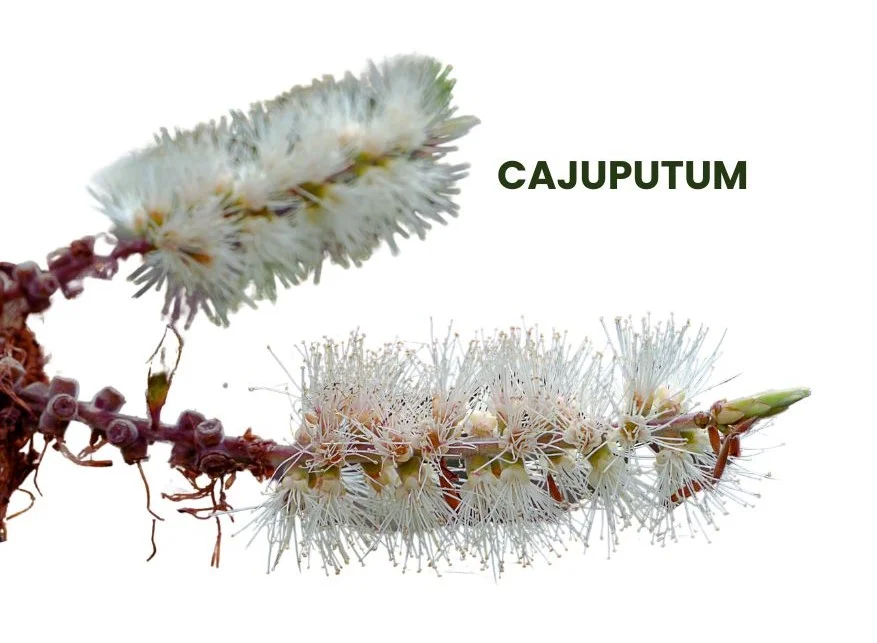Cajuputum, commonly known as Cajuput Oil, is a homeopathic remedy derived from the oil of the Cajuput tree.
It shares similarities with Oil of Cloves and is indicated for flatulence, tongue affections, and various nervous conditions.

Table of Contents
ToggleSOURCE INFORMATION
Scientific Classification
- Kingdom: Plantae
- Order: Myrtales
- Family: Myrtaceae
- Genus: Melaleuca
- Species: Melaleuca cajuputi
Origin
Cajuputum is derived from the oil extracted from the leaves of the Cajuput tree (Melaleuca cajuputi), native to Southeast Asia and Australia.
Historical Facts
- The Cajuput tree has a long history of traditional use in Southeast Asian and Australian folk medicine for its medicinal properties.
- Its oil has been used topically for its antiseptic and analgesic effects and internally for various respiratory and digestive ailments.
DRUG PATHOGENESIS
- Cajuputum acts similarly to Oil of Cloves and is indicated for flatulence, tongue affections, and nervous dyspnoea.
- It can cause copious diaphoresis and is used for retrocedent gout and non-inflammatory neuralgic affections.
KEY CHARACTERISTICS
- Sense of enlargement, particularly in the head.
- Persistent sensation of choking and spasmodic stricture of the esophagus.
- Feeling of constriction on swallowing solid food.
- Swollen tongue that fills the whole mouth.
- Hiccough, especially on slight provocation.
- Flatulence colic and tympanites (abdominal distension).
- Nervous distention of the bowels and spasmodic cholera.
PARTICULAR ORGAN SYMPTOMS
HEAD
- Sensation of much enlargement.
- Feeling as if one cannot get oneself together.
MOUTH
- Persistent sensation of choking and spasmodic stricture of the esophagus.
- Constricted sensation on swallowing solid food.
- Swollen tongue that fills the whole mouth.
STOMACH
- Hiccough, especially triggered easily.
ABDOMEN
- Flatulence colic and tympanites.
- Nervous distention of the bowels.
- Urine may smell like cat’s urine.
- Spasmodic cholera.
MODALITIES
- Symptoms worsen around 5 am and at night.
WHAT ARE MODALITIES IN HOMOEOPATHY?
RELATIONSHIP WITH OTHER DRUGS
- Compare with Bovista, Nux moschata, Asafoetida, Ignatia, and Baptisia for similar symptoms and indications.
DOSE
- First to third potency is recommended, with 5 drops of the oil.
Frequently Asked Questions
What is Cajuputum?
- Cajuputum, or Cajuput Oil, is a homeopathic remedy derived from the oil of the Cajuput tree.
- It is used for flatulence, tongue affections, and various nervous conditions.
What are some key characteristics of Cajuputum?
- Key characteristics of Cajuputum include a sense of enlargement, persistent sensation of choking, swollen tongue, hiccough, and flatulence colic.
How should Cajuputum be dosed?
- Cajuputum is typically prescribed in potencies ranging from first to third, with 5 drops of the oil.
Meaning of Difficult Words
- Diaphoresis: Profuse sweating.
- Retrocedent: Referring to a condition that moves backward or retreats, such as gout affecting a different part of the body than usual.
- Tympanites: Abdominal distension due to the accumulation of gas in the intestines.
